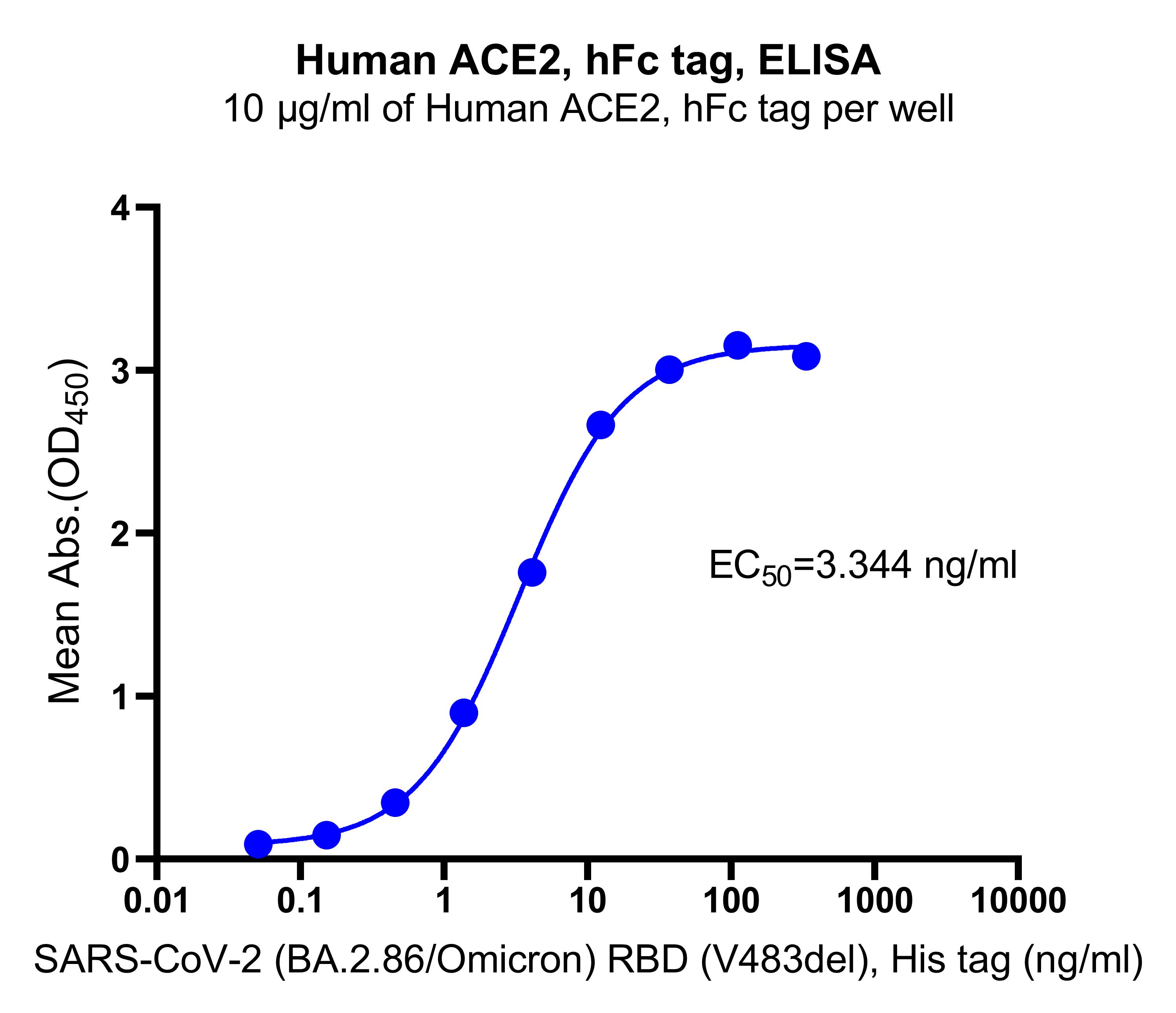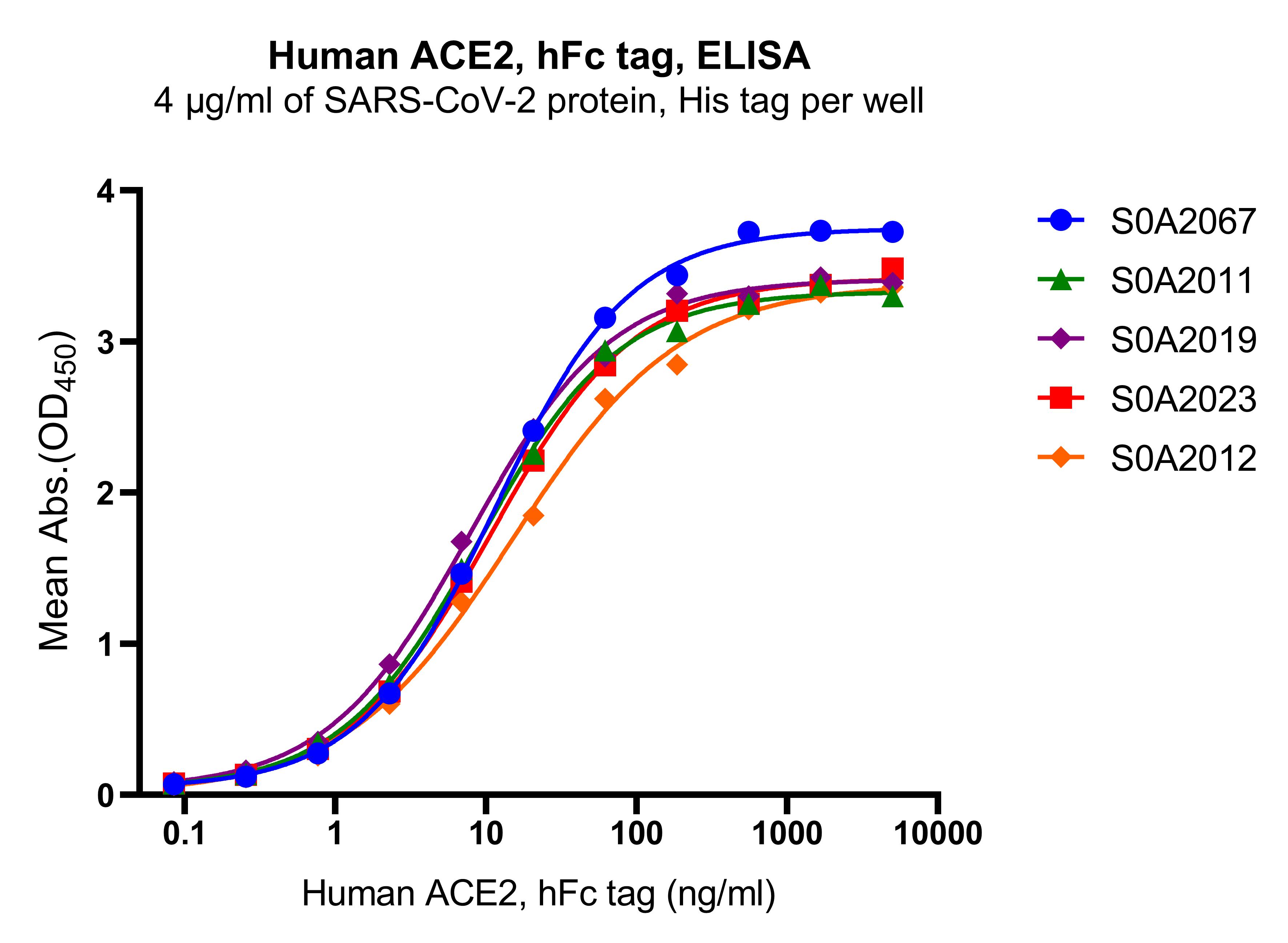Protein sequence (Q9BYF1, Gln18-Ser740, with C-hFc) QSTIEEQAKTFLDKFNHEAEDLFYQSSLASWNYNTNITEENVQNMNNAGDKWSAFLKEQSTLAQMYPLQEIQNLTVKLQLQALQQNGSSVLSEDKSKRLNTILNTMSTIYSTGKVCNPDNPQECLLLEPGLNEIMANSLDYNERLWAWESWRSEVGKQLRPLYEEYVVLKNEMARANHYEDYGDYWRGDYEVNGVDGYDYSRGQLIEDVEHTFEEIKPLYEHLHAYVRAKLMNAYPSYISPIGCLPAHLLGDMWGRFWTNLYSLTVPFGQKPNIDVTDAMVDQAWDAQRIFKEAEKFFVSVGLPNMTQGFWENSMLTDPGNVQKAVCHPTAWDLGKGDFRILMCTKVTMDDFLTAHHEMGHIQYDMAYAAQPFLLRNGANEGFHEAVGEIMSLSAATPKHLKSIGLLSPDFQEDNETEINFLLKQALTIVGTLPFTYMLEKWRWMVFKGEIPKDQWMKKWWEMKREIVGVVEPVPHDETYCDPASLFHVSNDYSFIRYYTRTLYQFQFQEALCQAAKHEGPLHKCDISNSTEAGQKLFNMLRLGKSEPWTLALENVVGAKNMNVRPLLNYFEPLFTWLKDQNKNSFVGWSTDWSPYADQSIKVRISLKSALGDKAYEWNDNEMYLFRSSVAYAMRQYFLKVKNQMILFGEEDVRVANLKPRISFNFFVTAPKNVSDIIPRTEVEKAIRMSRSRINDAFRLNDNSLEFLGIQPTLGPPNQPPVSEPKSCDKTHTCPPCPAPELLGGPSVFLFPPKPKDTLMISRTPEVTCVVVDVSHEDPEVKFNWYVDGVEVHNAKTKPREEQYNSTYRVVSVLTVLHQDWLNGKEYKCKVSNKALPAPIEKTISKAKGQPREPQVYTLPPSRDELTKNQVSLTCLVKGFYPSDIAVEWESNGQPENNYKTTPPVLDSDGSFFLYSKLTVDKSRWQQGNVFSCSVMHEALHNHYTQKSLSLSPGK
12 months from date of receipt, -20 to -70 °C as supplied. 6 months, -20 to -70 °C under sterile conditions after reconstitution. 1 week, 2 to 8 °C under sterile conditions after reconstitution. Please avoid repeated freeze-thaw cycles.
Angiotensin-converting enzyme 2 (ACE2) is an enzyme that can be found either attached to the membrane of cells (mACE2) in the intestines, kidney, testis, gallbladder, and heart or in a soluble form (sACE2). Both membrane bound and soluble ACE2 are integral parts of the renin–angiotensin–aldosterone system (RAAS) that exists to keep the body's blood pressure in check. Soluble ACE2 lowers blood pressure by catalyzing the hydrolysis of angiotensin II (a vasoconstrictor peptide) into angiotensin (1–7) (a vasodilator) which in turns binds to MasR receptors creating localized vasodilation and hence decreasing blood pressure. This decrease in blood pressure makes the entire process a promising drug target for treating cardiovascular diseases. mACE2 also serves as the entry point into cells for some coronaviruses, including HCoV-NL63, SARS-CoV, and SARS-CoV-2. The SARS-CoV-2 spike protein itself is known to damage the endothelium via downregulation of ACE2.

Immobilized Human ACE2, hFc tag at 10 μg/mL (50 μL/well) can bind SARS-CoV-2 (BA.2.86/Omicron) RBD (V483del) (Cat. No. S0A2073), His tag with EC50 of 2.942-3.794 ng/ml.

1. Immobilized SARS-CoV-2 EG.5 RBD, His tag (S0A2067) at 4 μg/mL (50 μL/well) can bind Human ACE2, hFc tag with EC50 of 10.31-12.42 ng/ ml.
2. Immobilized SARS-CoV-2 (BA.2.12.1/Omicron) S protein, His Tag (S0A2011) at 4 μg/mL (50 μL/well) can bind Human ACE2, hFc tag with EC50 of 7.713-10.39 ng/ ml.
3. Immobilized SARS-CoV-2 (BA.4&BA.5/Omicron) S protein, His Tag (S0A2012) at 4 μg/mL (50 μL/well) can bind Human ACE2, hFc tag with EC50 of 11.50-18.33 ng/ ml.
4. Immobilized SARS-CoV-2(BF.15) S protein, His tag (S0A2019) at 4 μg/mL (50 μL/well) can bind Human ACE2, hFc tag with EC50 of 6.511-8.786 ng/ ml.
5. Immobilized SARS-CoV-2 (BA.2/Omicron) S protein, His tag (S0A2023) at 4 μg/mL (50 μL/well) can bind Human ACE2, hFc tag with EC50 of 9.355-11.98 ng/ ml.

The activity of Human ACE2, hFc tag (S0A0071) was higher than other competing products.
2μg(R: reducing conditions)